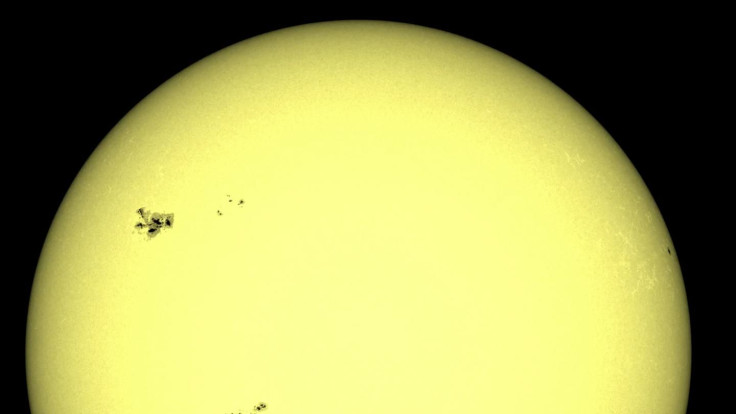Sun-Like Star Is Rosetta Stone For Solar Climate, Stellar Dynamo Study

We have known for quite some time now that the sun’s climate has its own cycle, even if we don’t understand the seasons well, and we know this cycle affects the sun’s electromagnetic radiation, which has repercussions for other bodies in the solar system. What we don’t know is the physical mechanism that underlies the solar cycle, but that couldn’t change, thanks to a nearby star called HD 173701.
Located about 120 light-years away in the constellation Cygnus, HD 173701 is a solar analog, which is another way of saying it is a lot like the sun. At least its physical properties, that is. Its mass, radius and age are all like the sun’s, but its chemical composition is quite different. While the sun is rich in hydrogen and helium — the first two elements in the periodic table, and the lightest — HD 173701 has twice as many heavy elements (a term in astronomy that refers to all elements other than hydrogen and helium) as the sun.
Observations from ground-based telescopes and data from the Kepler spacecraft, collected over 40 years, has shown this star also has a stellar cycle, one that lasts 7.4 years. During this time, much like the sun, spots on the surface of HD 173701 appear, increase in number, and then disappear again.
Christoffer Karoff from Aarhus University in Denmark, who led a new study of HD 173701, said in a statement Friday, “The unique combination of a star almost identical to the Sun, except for the chemical composition, with a cycle that has been observed from both the Kepler spacecraft and from ground makes this star a Rosetta Stone for the study of stellar dynamos.”
The stellar dynamo is caused by the interaction between the a star’s magnetic fields, its convection and its rotation, but given what we know about the solar cycle — such as the Maunder Minimum in the 17th century, when solar spots were almost nonexistent for about 50 years — our knowledge is clearly far from complete.
Karoff’s team combined “photometric, spectroscopic and asteroseismic data” about HD 173701 to create the most-detailed observation set for a star other than the sun. The team found the stellar cycle’s amplitude in HD 173701’s magnetic field was much stronger than the sun’s, and it was also stronger in visible light.
That led the researchers to conclude that the presence of heavy elements is larger relative amounts in a star would cause stronger stellar cycles. They also proposed an explanation for their conclusion. Heavy elements make the star more opaque, which makes the heat transfer mechanism deep inside the star change from radiation to convection. This affects the rotation pattern near the star’s surface and also the amplitude of how much the magnetic field varies. The heavy elements also cause a greater contrast between the star’s bright regions and quieter backgrounds, which strengthens the cyclic variability as seen in the star’s light output.
Titled “The Influence of Metallicity on Stellar Differential Rotation and Magnetic Activity,” the study appeared online Friday in the Astrophysical Journal.
© Copyright IBTimes 2024. All rights reserved.





















